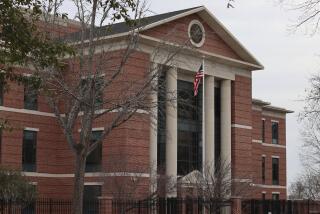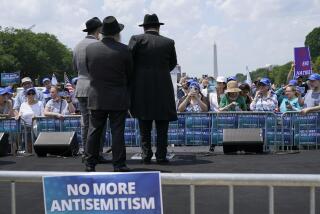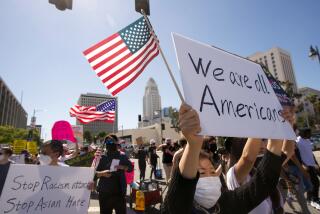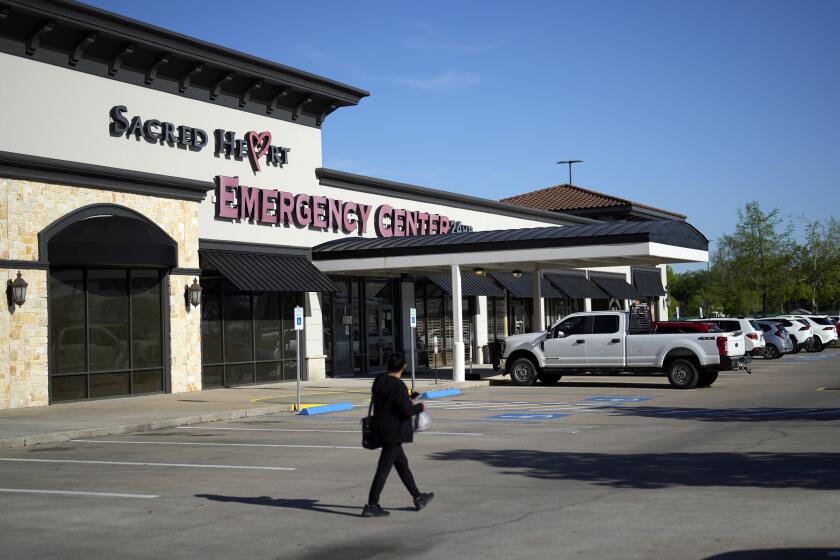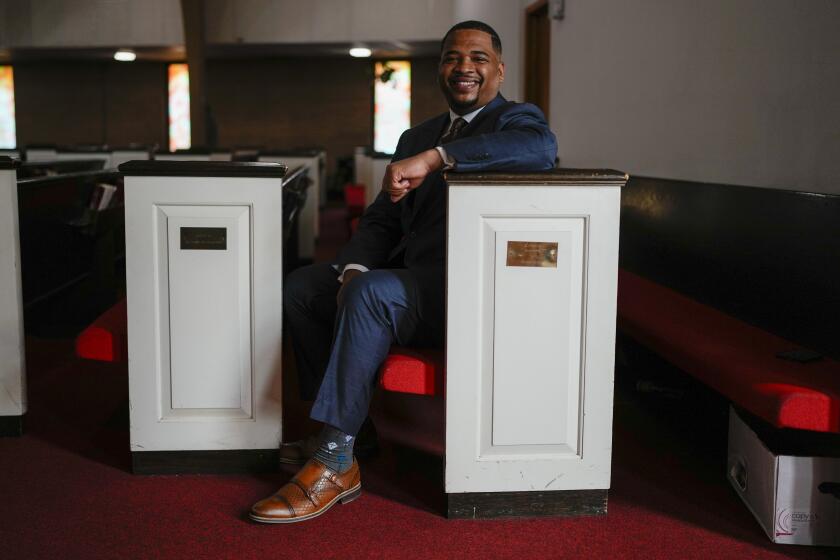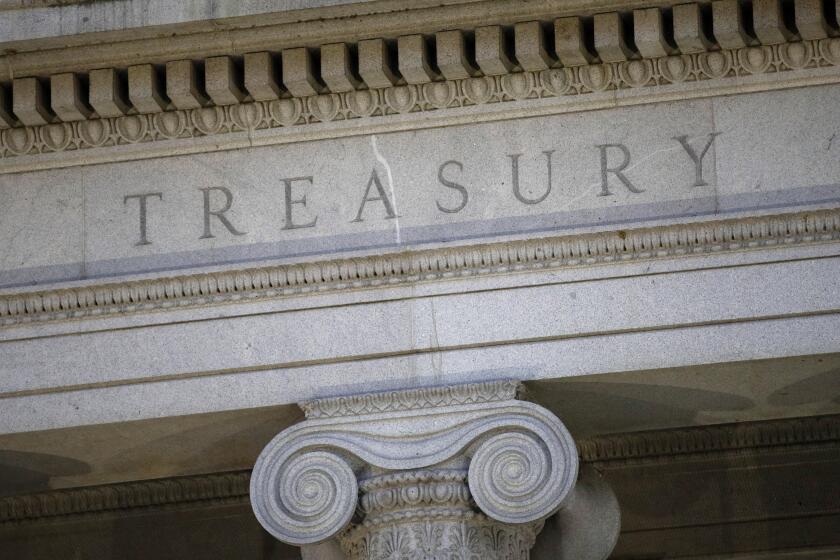Latinos and transgender people see big increases in hate crimes, FBI reports
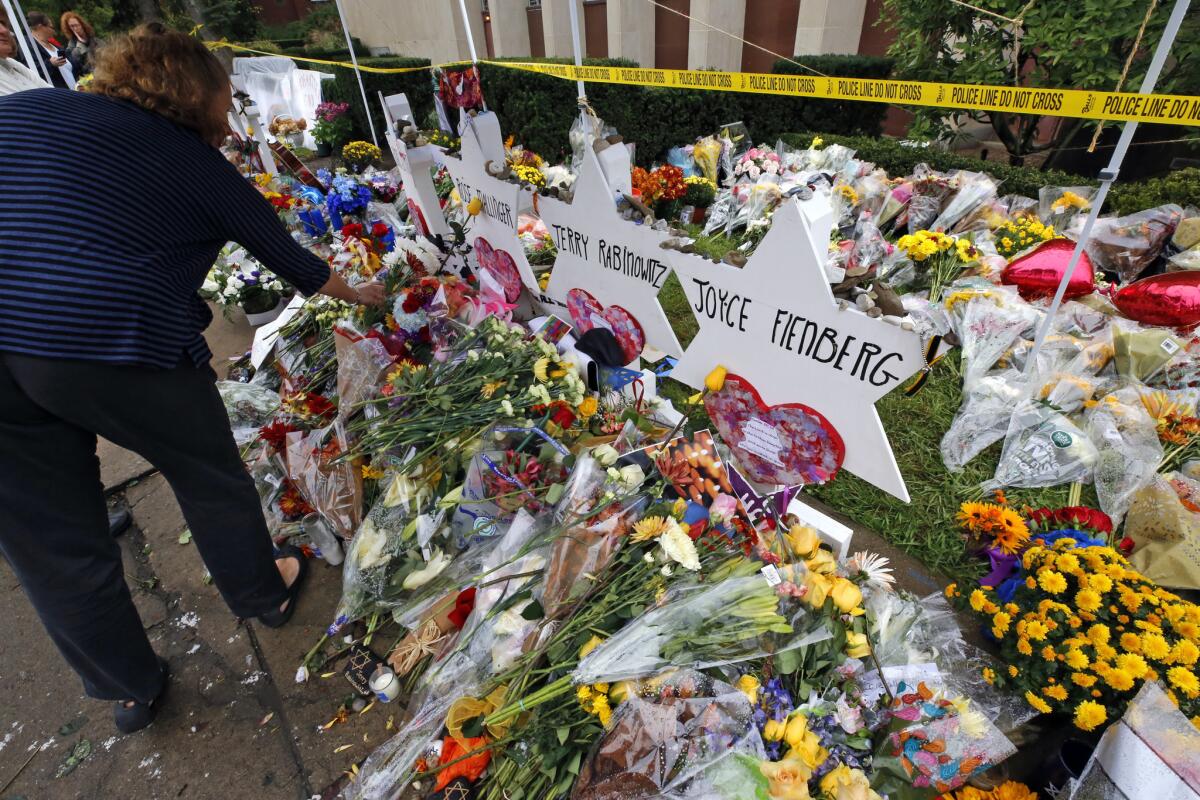
Hate crimes targeting people last year surged to their highest levels in 16 years despite a slight overall dip in the number of hate crimes, the FBI said in a report released Tuesday.
The FBI’s tally, which used data submitted by more than 2,000 police departments and law enforcement agencies, logged 7,120 hate crimes in 2018. The total is 55 lower than 2017, a decline of less than 1%.
The drop is the first time hate crimes have gone down in four years. But it’s tiny when compared with long-term trends in increased hate crimes. Aside from last year, the total number of hate crimes the FBI reported is higher than every year since 2008.
“The numbers, on the surface, seem to remain relatively flat overall,” said Brian Levin, director of the Center for the Study of Hate and Extremism at Cal State San Bernardino. “But underneath the data there are some interesting trends happening.”
“There has been a disturbing shift to hate crimes directed against people as opposed to property and these increases are seen almost across the board,” he said.
According to the FBI, crimes against people grew to 4,571 last year, a year-to-year increase of just under 12%.
“The number of crimes targeting Muslims cratered,” Levin said. “Anti-Semitic crimes dropped. But the ones targeting Latinos increased for the third year.”
The FBI counted 188 anti-Muslim hate crimes, down from 273 the year before. There were 835 anti-Semitic incidents, compared with 938 the previous year. And there were 485 anti-Latino crimes, up from 427 in 2017. The total number of crimes targeting Latinos shot up by 41% since 2016.
The number of crimes singling out transgender and gender nonconforming people also spiked by 41% to 168.
In California, there was a nearly 4% decline in hate crimes to 1,063. But Los Angeles experienced a more than 7% increase in hate crimes for a total of 282. The most common ones targeted a person’s race.
Last year included the deadliest attack on Jews in modern U.S. history, when a gunman killed 11 worshipers at the Tree of Life synagogue in Pittsburgh on Oct. 27, 2018. Before the shootings, the suspect posted online about immigrant “invaders” aided by Jewish-run refugee resettlement groups and called Jews the “enemy of white people.” He awaits trial in federal court.
Because of the deaths in Pittsburgh, the 24 hate crime killings the FBI reported was the highest figure since the bureau first released annual data on hate crimes 27 years ago.
The FBI’s report follows its 2017 hate crimes count, which showed the largest increase since 2001. That year, anti-Muslim crimes spiked after the 9/11 attacks.
Tuesday’s report is the second annual release of hate crimes statistics during Donald Trump’s presidency. As he campaigns for reelection, Trump has defended himself against accusations that his presidency has emboldened hate groups.
Jewish organizations, including the Anti-Defamation League, have blamed Trump’s rhetoric about immigrants and his embrace of anti-Jewish conspiracy theories and memes as part of what led to increases in 2017 in anti-Semitic incidents and those targeting Latinos and Muslims.
Trump has tweeted anti-Jewish and anti-Muslim memes from known extremists, including a campaign tweet that featured a symbol similar to the Star of David, images of cash and the phrase “most corrupt candidate ever” to describe Hillary Clinton. In late 2017, Trump tweeted anti-Muslim videos from the far-right group Britain First, drawing condemnation from then-Prime Minister Theresa May.
This year, the president faced critics after he tweeted to four congresswomen of color — three of whom were born in the U.S. — to “go back” to the “totally broken and crime infested places from which they came.”
In his defense, the president has said he is the “least racist person there is anywhere in the world.” He has pointed to his own family, which includes a Jewish daughter, son-in-law and grandchildren, to fend off accusations of anti-Semitism.
Criminologists and civil rights groups concede that hate crimes began to increase in 2015 under President Obama after six years of decline. Studies have also shown that hate crimes tend to grow during election years and times of tense political fights over issues such as immigration or national security, Levin said.
“You can’t prove that every move Trump makes leads to a hate crime,” he said. “But you can look at the year 2016 and see a spike in hate crimes, or look at the increase in anti-immigrant rhetoric and in recent years and see an increase in anti-Latino crimes.”
Daniel Elbaum, chief advocacy officer of the American Jewish Committee, partly pointed to “the ugliness” of social and policy debates in the U.S. to explain the high number of hate crimes.
“There is nothing new about hate in America, but the combination of the ugliness in our public discourse and the ease with which this incendiary language can be spread has clearly had disastrous, sometimes fatal, consequences,” said Elbaum. “That is what we saw with the murders at the Tree of Life synagogue in Pittsburgh and the Chabad of Poway.” The Poway synagogue shooting in April of this year left one dead and three injured.
Experts said the FBI’s count probably misses many — possibly most — hate crimes that took place last year.
There are more than 16,000 law enforcement agencies in the country, and they report hate crime numbers to the FBI voluntarily. In the count released Tuesday, more than 14,000 agencies did not report data or told the bureau there were no hate crimes in their jurisdictions.
That included all of Alabama and Wyoming, where agencies reported zero hate crimes. There were also no hate crimes reported in St. Petersburg, Fla.; Madison, Wis.; and Newark, N.J. There were 85 cities with populations higher than 100,000 where law enforcement either did not share data with the FBI or said there were zero hate crimes.
It’s also harder to analyze the FBI’s data over time because of changes to how the bureau has collected information. The FBI defines a hate crime as a “criminal offense against a person or property motivated in whole or in part by an offender’s bias against a race, religion, disability, sexual orientation, ethnicity, gender or gender identity.” Crimes against Hindus, Sikhs and Arabs have been counted only since 2015. Another problem is that victims don’t always call the police.
In addition, the FBI’s data conflict with the Justice Department’s National Crime Victimization Survey, which estimates there to be 250,000 hate crimes each year. The Justice Department count doesn’t include intimidation and vandalism incidents, which are included in the FBI’s hate crimes report.
More to Read
Start your day right
Sign up for Essential California for news, features and recommendations from the L.A. Times and beyond in your inbox six days a week.
You may occasionally receive promotional content from the Los Angeles Times.

